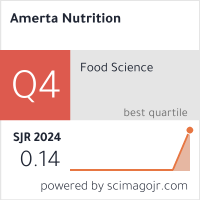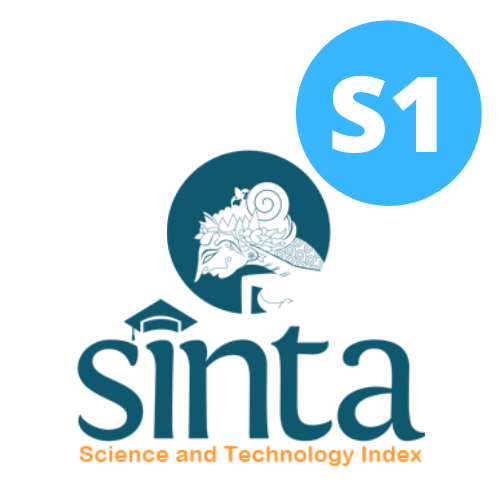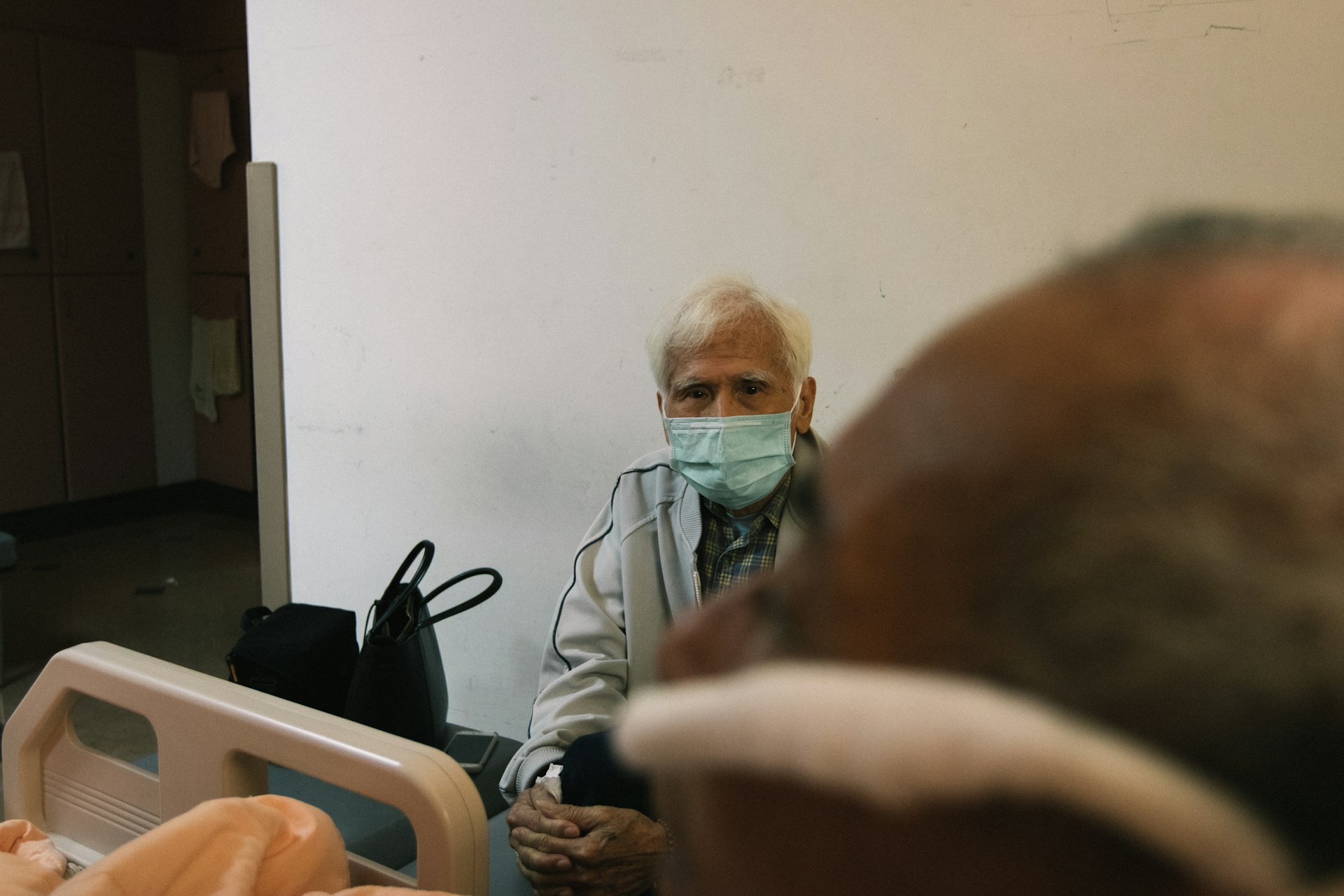The Impact of the Family Quality Village Program on Accelerating Stunting Reduction Efforts in Sleman Regency
Kajian Dampak Program Kampung Keluarga Berkualitas terhadap Percepatan Penurunan Stunting di Kabupaten Sleman

Downloads
Background: Stunting is a significant nutrition problem in Indonesia. The current national prevalence is 21.6%, whereas the prevalence in the Yogyakarta Province and Sleman Regency are 16.4% and 15%, respectively. The Family Quality Village Program is initiated to accelerate stunting reduction efforts by empowering families in health, education, and entrepreneurship.
Objectives: This study evaluated the implementation and impact of the Family Quality Village Program in Sleman Regency in conjunction with other stunting reduction programs.
Methods: This study was a qualitative study with a case study approach. Data collection techniques included document analysis, 4 sessions of focus group discussions, in-depth interviews involving 11 key informants, and reflective journals. Data were analyzed using thematic analysis method.
Results: In 2022, there were 34 Family Quality Village in the Sleman Regency. We obtained 3 major themes; program acceptance among stakeholders, synergy with other stunting related programs, and program management. Several local government agencies and community health staff working on stunting reduction efforts were not familiar with the concept of the Family Quality Village Program, thus affecting stakeholder acceptance and synergies with other stunting programs. Additionally, this program experienced significant changes regarding the local governance system which required adjustment in the program management, hence affecting the program effectiveness.
Conclusions: It is crucial to increase awareness of the program and coordination to ensure its optimum impact on stunting reduction efforts. The local governance system should also be considered to ensure program acceptance among stakeholders.
INTRODUCTION
Childhood malnutrition, particularly stunting, remains a significant public health problem in Indonesia. Stunting indicates chronic malnutrition occurring within the first 1000 days of life starting from conception. Studies reported that stunting inhibits brain development and growth in children1. Studies also showed that the detrimental effects of stunting on health and cognition continue into the following years, leading to more serious economic and societal consequences on the individuals, families, communities, and the country2;3;4. Concerning this, the Indonesian government mandated the reduction of stunting up to 14% by 2024 through the Presidential Decree 72/2021, yet, the prevalence of stunting in Indonesia is currently 21.6%5;6.
The government has appointed the National Population and Family Planning Board (BKKBN) as the leading agency that coordinates all initiatives to accelerate stunting reduction in Indonesia. The initiative involves cross-sectoral collaboration of various line ministries with different roles and functions. Concerning policy implementation, the government formed and appointed a Stunting Reduction Acceleration Team (TPPS) at each provincial, districts, sub-districts, and village levels6. In addition, BKKBN formed a Family Assistance Team (TPK) as a strategic effort to outreach households and leverage attainment of the stunting reduction target by 20246.
The initiation of the Family Quality Village Program by BKKBN, is rooted in the previous long- standing and successful Family Planning Village program, with additional tasks of intensifying efforts to reduce stunting. The Family Quality Village or Kampung KB is a village-level taskforce that integrates and converges all efforts to empower households and contribute to the quality improvement of human resources and communities7. To ensure immediate implementation of the policy, the president enacted the Presidential Decree 3/2022, containing specific instructions for the relevant line ministries and regional heads8. This decree instructs all efforts to accelerate stunting reduction to be aligned with the focus of the Family Quality Village Program. Currently, there are 188 Family Quality Villages in the Yogyakarta Province, and in 2020 the Sleman Regency has the highest percentage of sustainable Family Quality Villages at 72%9.
Contrastingly, the 2022 Indonesian Nutrition Status Survey (SSGI) reported that Sleman Regency experienced a mere 1% decrease in the prevalence of stunting from 16%10to 15%5, or above the national target. Moreover, the survey showed that stunting reduction rate in Sleman Regency is lower than that of other regencies in Yogyakarta Province. Hence, to obtain a comprehensive overview of the program management and its effectiveness, we evaluated the impact of the Family Quality Village program on stunting reduction acceleration in Sleman Regency. Assuming that various contextual factors in place causing the lack of achievement, we analyze causes and determine lessons learned to gain insight on what components of the program should be maintained, strengthened, or modified in the future. The dynamicity with other relevant programs was considered to encourage improvement and replication in other places.
METHODS
This was a qualitative study with descriptive exploratory case study approach. The case study was conducted in villages implementing the Family Quality Village Program in Sleman Regency between May and September 2023. Data were collected by using document analysis, focus group discussions, key informant interviews, and reflective journal methods. We involved staff from local government agencies who are responsible for managing stunting related programs, villages apparatus, and community health workers from Condongcatur, Wedomartani, Tamanmartani, and Pandowoharjo Villages. The four villages were selected purposively to represent the stratification of the Family Quality Village available in Sleman Regency (developing and sustainable strata); whereas, the informants were selected using the maximum variance sampling method. The variability considered during resource persons recruitment is their roles and involvement in stunting reduction programs.
Focus group discussions were conducted online and held in four separate sessions, divided into participants from a) local government agencies and b) villages apparatus and community health workers. In- depth interviews were conducted with key informants and some of the focus group discussion participants to get clarification and additional information.Table 1shows the characteristics and number of informants involved in each focus group discussions and in-depth interviews. The interview process was conducted using an interview guide, and each informant was asked to spend approximately 45 to 60 minutes. We carried out the face-to-face and online interviews according to the informants' preferences. All interviews were recorded and transcribed at verbatim. We also examined several documents such as government regulations, policies, survey and activity reports, and program technical guidelines. The analysis method followed an iterative approach, which means that the study was conducted through a process of comparing empirical data that developed in a cyclical manner11. Data was analyzed manually using thematic analysis techniques. To maintain trustworthiness, several techniques were implemented including methods and data triangulation as well as member check. Additionally, we kept a reflective journal to reflect upon our experiences and interpretations of the data.
| No | Institution of Informants | Number of Participants (Person) | Activities Participated | |
|---|---|---|---|---|
Focused Group Discussion | In-Depth Interview | |||
1. | Regional Development Planning Agency (Bappeda) | 1 | ✓ | - |
2. | Women Empowerment, Child Protection, Population Control and Family Planning Agency (DP3AP2KB) | 2 | - | ✓ |
3. | District Health Office | 1 | ✓ | - |
4. | District Social Services | 1 | ✓ | - |
5. | Community and Village Empowerment Agency | 1 | ✓ | - |
6. | Public Works, Settlements and Spatial Planning Agency (DPUPKP) | 2 | - | ✓ |
7. | Office of Cooperatives and Small Medium Enterprises | 2 | - | ✓ |
8. | ||||
Muhoozi, G. K. M., Atukunda, P., Mwadime, R., Iversen, P. O. & Westerberg, A. C. Nutritional and developmental status among 6- to 8-month-old children in southwestern Uganda: a cross-sectional study. Food Nutr Res 60, (2016).
Helmyati, S., Atmaka, D. R., Wisnusanti, S. U. & Wigati, M. Stunting: Permasalahan Dan Penanganannya. (Gadjah Mada University Press, Yogyakarta, 2019).
Osendarp, S. et al. The COVID-19 crisis will exacerbate maternal and child undernutrition and child mortality in low- and middle-income countries. Nat Food 2, 476–484 (2021).
Rahmawaty, S. & Meyer, B. J. Stunting is a recognized problem: Evidence for the potential benefits of ω-3 long-chain polyunsaturated fatty acids. Nutrition 73, 110564 (2020).
Badan Kebijakan Pembangunan Kesehatan Kementerian Kesehatan RI. Status Gizi SSGI 2022. (2022).
Presiden Republik Indonesia. Peraturan Presiden Republik Indonesia Nomor 72 Tahun 2021 Tentang Percepatan Penurunan Stunting. (Indonesia, 2021).
Badan Kependudukan dan Keluarga Berencana Nasional. Tentang Kampung KB Kampung Keluarga Berkualitas (KB) . https://kampungkb.bkkbn.go.id/tentang (2021).
Presiden Republik Indonesia. Instruksi Presiden Republik Indonesia Nomor 3 Tahun 2022 Tentang Optimalisasi Penyelenggaraan Kampung Keluarga Berkualitas. (Indonesia, 2022).
Direktorat Analisis Dampak Kependudukan Badan Kependudukan Dan Keluarga Berencana Nasional. Klasifikasi Kampung KB Menuju Kampung Berkualitas. (BKKBN, Jakarta, 2020).
Kementerian Kesehatan Republik Indonesia. Buku Saku Hasil Studi Status Gizi Indonesia (SSGI) Tingkat Nasional, Provinsi, Dan Kabupaten/Kota Tahun 2021. (2021).
Utarini, A. Tak Kenal Maka Tak Sayang: Penelitian Kualitatif Dalam Pelayanan Kesehatan. (Gadjah Mada University Press, Yogyakarta, 2021).
Badan Pusat Statistik Provinsi Daerah Istimewa Yogyakarta. Provinsi Daerah Istimewa Yogyakarta Dalam Angka 2023. (2023).
Badan Pusat Statistik Kabupaten Sleman. Kabupaten Sleman Dalam Angka 2023. (2023).
Dinas Kesehatan Kabupaten Sleman. Profil Kesehatan Kabupaten Sleman Tahun 2020. (2020).
Bupati Sleman. Keputusan Bupati Sleman Nomor 14.1/Kep.KDH/A/2021 Tentang Kalurahan Lokasi Fokus Prioritas Penanggulangan Stunting Tahun 2021 Dan Tahun 2022. (Indonesia, 2021).
Bappeda Sleman. Rembuk Stunting tingkat Kabupaten Sleman tahun 2021. https://bappeda.slemankab.go.id/rembuk-stunting-tingkat-kabupaten-sleman-tahun-2021.slm (2021).
Badan Kependudukan dan Keluarga Berencana Nasional. Peraturan Badan Kependudukan Dan Keluarga Berencana Nasional Republik Indonesia Nomor 13 Tahun 2022 Tentang Petunjuk Teknis Penggunaan Dana Bantuan Operasional Keluarga Berencana Tahun Anggaran 2023. (Indonesia, 2022).
Bupati Sleman. Peraturan Bupati Sleman Nomor 40.1 Tahun 2022 Tentang Penyelenggaraan Kampung Keluarga Berkualitas. (Indonesia, 2022).
Presiden Republik Indonesia. Peraturan Presiden Republik Indonesia Nomor 18 Tahun 2020 Tentang Rencana Pembangunan Jangka Menengah Nasional Tahun 2020-2024. (Indonesia, 2020).
Badan Kependudukan dan Keluarga Berencana Nasional. Peraturan Badan Kependudukan Dan Keluarga Berencana Nasional Republik Indonesia Nomor 12 Tahun 2021. (Indonesia, 2021).
Bupati Sleman. Peraturan Bupati Sleman Nomor 22.1 Tahun 2021 Tentang Percepatan Penanggulangan Stunting Terintegrasi. (Indonesia, 2021).
Sekretariat Wakil Presiden Republik Indonesia. Strategi Nasional Percepatan Pencegahan Anak Kerdil (Stunting) Periode 2018-2024. (Sekretariat Wakil Presiden Republik Indonesia, Jakarta, 2018).
Bupati Sleman. Keputusan Bupati Sleman Nomor 12.3/Kep.KDH/A/2022. (Indonesia, 2022).
Keputusan Gubernur. Keputusan Gubernur Daerah Istimewa Yogyakarta Nomor 206/KEP/2022 Tentang Penetapan Hasil Penilaian Kinerja Kabupaten/Kota Dalam Pelaksanaan Konvergensi Intervensi Penurunan Stunting Terintegrasi Di Daerah Istimewa Yogyakarta Tahun 2021. (Indonesia, 2022).
Gubernur Daerah Istimewa Yogyakarta. Peraturan Gubernur Daerah Istimewa Yogyakarta Nomor 25 Tahun 2019 Tentang Pedoman Kelembagaan Urusan Keistimewaan Pada Pemerintah Kabupaten/Kota Dan Kalurahan. (2019).
Bhutta, Z. A. et al. Evidence-based interventions for improvement of maternal and child nutrition: What can be done and at what cost? The Lancet vol. 382 452–477 Preprint at https://doi.org/10.1016/S0140-6736(13)60996-4 (2013).
Rukiko, M. D., Mwakalobo, A. B. S. & Mmasa, J. J. The impact of Conditional Cash Transfer program on stunting in under five year’s poor children. Public Health in Practice 6, (2023).
Riyadh, M. A. Implementasi Program Kampung Keluarga Berkualitas di Dinas Pemberdayaan Perempuan Perlindungan Anak dan Keluarga Berencana Kota Balikpapan. (Institut Pemerintahan Dalam Negeri, Balikpapan, 2023).
Saputra, M. A. & Mayarni. Pelaksanaan Program Kampung Keluarga Berkualitas (KB) Mekar Wangi Di Kelurahan Tangkerang Barat. JIANA: Jurnal Ilmu Administrasi Negara 20, 149–162 (2022).
Phitra, F. A., Lipoeto, N. I. & Yetti, H. Evaluasi Pelaksanaan Program Pencegahan dan Penurunan Stunting di Desa Lokus Stunting Kabupaten Merangin Tahun 2022. Jurnal Kebijakan Kesehatan Indonesia 12, 127–141 (2023).
Copyright (c) 2024 Amerta Nutrition

This work is licensed under a Creative Commons Attribution-ShareAlike 4.0 International License.
AMERTA NUTR by Unair is licensed under a Creative Commons Attribution-ShareAlike 4.0 International License.
1. The journal allows the author to hold the copyright of the article without restrictions.
2. The journal allows the author(s) to retain publishing rights without restrictions
3. The legal formal aspect of journal publication accessibility refers to Creative Commons Attribution Share-Alike (CC BY-SA).
4. The Creative Commons Attribution Share-Alike (CC BY-SA) license allows re-distribution and re-use of a licensed work on the conditions that the creator is appropriately credited and that any derivative work is made available under "the same, similar or a compatible license”. Other than the conditions mentioned above, the editorial board is not responsible for copyright violation.












































